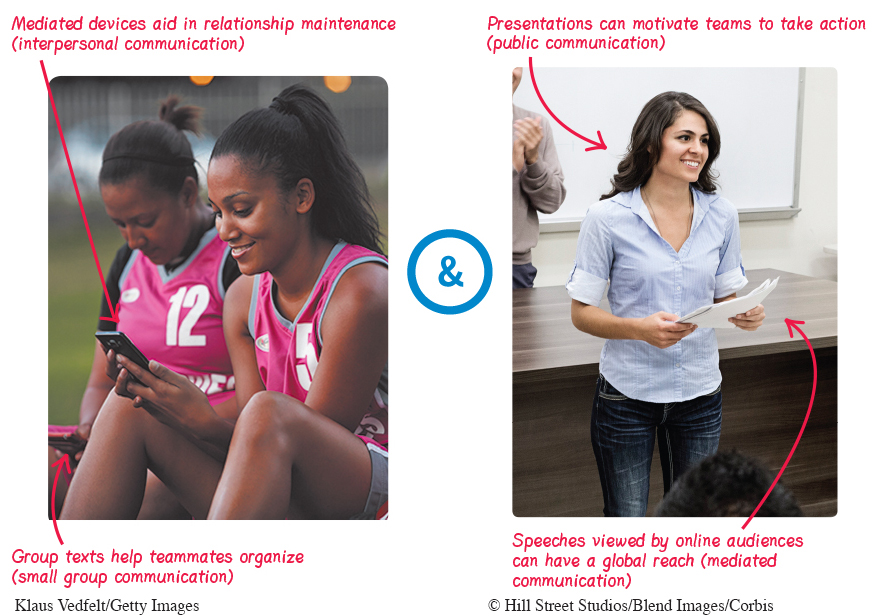Types of Communication
As the preceding history illustrates, communication is a diverse field with a rich past. Although many specific topics are currently being studied and taught (such as doctor-
Mediated communication is separated (“mediated”) by some type of technological device. You use mediated communication when you make phone calls, tweet, send text messages or e-
Interpersonal communication is communication between two people in which the messages exchanged have a significant impact on the participants’ thoughts, emotions, behaviors, and relationship. Through interpersonal communication, you build, maintain, and end bonds with your friends, family members, lovers, and other relationship partners.
Small group communication involves three or more interdependent persons who share a common identity (such as membership on a team) and who communicate to achieve common goals or purposes. For example, a group might come together to complete a class project, organize a fund-
Public communication is the process of preparing and delivering a message to an audience to achieve a specific purpose (also known as public speaking). An example of this would be a speech you will probably have to give for this class. (This may sound scary, but don’t worry—
These four types of communication differ in terms of their main purpose, the number of people involved, and their nature (linear, interactive, or transactional). Yet they also are connected to one another—
Perhaps most important, the choices you make when using any type of communication strongly influence the outcomes you experience. When you make good choices, you’re more likely to get positive outcomes. When you make poor choices, negative outcomes often follow. What does it mean to make “good” choices and communicate “well”? We tackle that question in the next section.
DOUBLE TAKE
MEDIATED  PUBLIC COMMUNICATION
PUBLIC COMMUNICATION
Whether you’re sending a text or making a speech, different types of communication are often connected. In addition to what is pointed out below, what connections can you make between the different types of communication you participate in each day?
